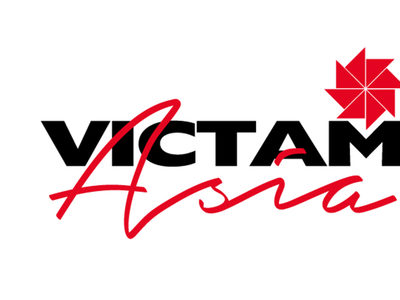The International Grains Council (IGC) forecasts Kazakhstan’s 2016-17 wheat production at 13.5 million tonnes, down from 13.7 million the year before. It predicts barley production at 2.4 million tonnes, down from 2.7 million the year before.
Total grains production in 2015-16 was 17.5 million tonnes, up from 16.4 million the prior year. Kazakhstan’s wheat crop included 2.1 million tonnes of durum in 2015-16.
The IGC forecasts Kazakhstan’s total grains exports at 7.3 million tonnes in 2015-16, up from 6.4 million the year before. Wheat exports are put at 6.5 million tonnes, up from 5.9 million tonnes the previous year. Barley exports are put at 800,000 tonnes, up from 500,000 tonnes the prior year.
“Production data from the Kazakhstani Statistical Agency show total grain production in 2015 at 18.2 million tonnes and total wheat production at 13.7 million tonnes, 6% more than last year,” the USDA attaché said in a report published in January. “Kazakhstani currency devaluation affected exports prices, pushing Kazakhstani exports up significantly.”
Between late August 2015 and January 2016, the Kazakhstani tenge to the U.S. dollar exchange rate plunged from 183 tenge to 380 tenge, with a significant impact on trade, the attaché said.
“Additionally, the Russian ruble to Kazakhstani tenge exchange rate increased 53% from August 2015. As a result, from August 2015 through November 2015 following the devaluation of the tenge, Kazakhstani exports tripled.
“We expect to see some shipments of wheat from Kazakhstan to Russia. Many of these shipments, particularly when they are transported by truck, will not show in official trade statistics for either country because it is shipping within the Eurasian Economic Union.”
The attaché also highlighted a series of other issues affecting exports. For example, the cost of exporting to Iran increased. “The railway service tariff increased 3% and expenses at the Aktau grain terminal services increased 4%,” the report said. “Exports routes via Turkey or Iran are blocked as a reflection of Russia-Turkey and Iran-Saudi Arabia relations.”
China has agreed, following negotiations, to remove administrative barriers to Kazakhstan’s grain exports, but the attaché highlighted a number of technical barriers, notably the change in rail gauge between the two countries which means that trains must be unloaded and reloaded at the border. The attaché notes China’s interest in organic products from Kazakhstan.
The January report said farmers completed harvesting 98% of the production area. “Additionally, the increase in wheat production can be attributed to a greater use of mineral fertilizer treatments,” it said. “Unfortunately, traders report that the majority of grain produced has a high moisture content, resulting in lower quality wheat and additional costs for drying.”
Consumption Statistics
“The Kazakhstani Statistics Committee reported that as of Jan. 1, 2016, 82% of wheat was used for food consumption, 11% for seed and 6% for feed,” the attaché said.
Feed use increased 16% from the previous year, largely due to quality issues.
“Additionally, as the Kazakhstani government continues its strategy to develop the beef sector for the export market, low quality wheat is mostly used for feed,” the attaché said.
Barley consumption is reported as 35% for food, 16% for seed and 48% for feed.
As of Jan. 1, 2016, the Kazakhstani “social bread” subsidies were cancelled.
“However, because of the impact for the low-income population, some regional governments decided to continue subsidizing bread production,” the attaché said. “For example, in the Almaty region after bread prices increased from 62 tenge to 67 tenge per loaf, regional authorities allocated 60 million tenge from the regional budget for 2016 bread subsidies.”
Second biggest flour exporter
“Industry sources indicate that Kazakhstan’s mills currently operate at approximately 50% of their capacity, estimated at 10 to 11 million tonnes of grain processing per year,” the attaché said.
There are some 650 mill complexes in Kazakhstan.
Kazakhstan is a major exporter of flour, beaten only in volume by Turkey. The IGC puts Kazakhstan’s wheat flour exports in 2015-16 at 2.5 million tonnes, up from 2.385 million the year before.
“Nearly all of Kazakhstan’s flour exports go to Central Asian countries – Uzbekistan, Kyrgyzstan, Tajikistan, Turkmenistan and Afghanistan,” the attaché’s annual report said. “Kazakhstan’s flour export destinations remain principally in the traditional Central Asian countries and Russia, with its extensive retail system. Countries with membership in the EAEU (Russia, Kazakhstan, Belarus, Armenia and Kyrgyzstan) are able to trade with no border restrictions. Kazakhstan’s exports are not competitive outside the Central Asia region, such as Northern Africa.”
The attaché also reports that Kazakhstan has implemented a program to assist millers with the cost of flour fortification.
“However, the fortification cost reimbursement program in Kazakhstan requires a long administrative process through the Ministry of Health,” the annual report said. “In 2014, this program allocated funding to fortify up to approximately 2.5 million tonnes of flour.”
Ethanol plant opening delayed
The start of operations at the only ethanol plant in Kazakhstan, “Biochim,” located in the city of Tainsha in the North-Kazakhstani region, has been delayed until December.
“Biochim was commissioned in September 2006 and planned to utilize technology to process local wheat into high-tech products, such as the high-octane fuel additive, ethanol, (57,000 tonnes per year), a native gluten for the food industry (19,000 tonnes per year) and fodder yeast for livestock (40,000 tonnes per year),” the attaché said. “However, shortly after the launch in 2006 the plant experienced problems with product sales and distribution, resulting in a complicated bankruptcy dispute that resulted in closure of the plant.”
Oilseeds plants
As part of Kazakhstan’s crop diversification strategy and goal to create domestic, value-added products, the Kazakhstani Ministry of Agriculture is considering the construction of three new oilseed processing facilities, the attaché said.
“Total processing capacity of these projects would be 1.2 million tonnes, which equates to roughly half of Kazakhstan’s oilseed production,” it said.
“The Ministry of Agriculture also recently announced that there is some foreign investor interest in such projects, including an oilseeds and grains processing facility joint project with China. This particular facility will be located in the North-Kazakhstan region and is projected to cost $58 million, with a design capacity of 80,000 tonnes of oil, 200,000 tonnes of flour and 200,000 tonnes of feedstuffs.”
Policy changes
Kazakhstan’s government has brought in changes to the law designed to encourage the growth of agricultural cooperatives.
“Until now, an agricultural cooperative system has been virtually nonexistent in Kazakhstan,” the attaché explained. “As of June 1, 2015 there were 1,843 agricultural cooperatives registered in Kazakhstan, with only 2% of Kazakhstani farmers as members.”
The new rules are planned to make co-operatives commercial organizations which can share their profits between members.
“The amendments also made internal audits of cooperatives obligatory, mandated one vote for each member, and implemented a special tax regime for cooperatives which allows for extended types of activity,” the attaché said. “The Kazakhstani Ministry of Agriculture believes that these new amendments will stimulate the economic integration of farmers and therefore increase farmers’ incomes with more effective use of production inputs and reduced production costs.”
Key Facts
Capital: Astana
Population: 18,157,122 (July 2015 est.)
Religions: Muslim 70.2%, Christian 26.2% (mainly Russian Orthodox), other 0.2%, atheist 2.8% (2009 est.).
Location: Central Asia, northwest of China; a small portion west of the Ural (Zhayyq) River in easternmost Europe.
Government: Republic; authoritarian presidential rule. Chief of state: President Nursultan Abishuly Nasarbayev (since Dec. 1, 1991); head of government: Prime Minister Karim Masimov (since April 2, 2014).
Economy: Kazakhstan, geographically the largest of the former Soviet republics, excluding Russia, possesses substantial fossil fuel reserves and other minerals and metals, such as uranium, copper, and zinc. It also has a large agricultural sector featuring livestock and grain. The government realizes that its economy suffers from an overreliance on oil and extractive industries so it has embarked on an ambitious diversification program, aimed at developing targeted sectors like transport, pharmaceuticals, telecommunications, petrochemicals and food processing. Kazakhstan is landlocked, with restricted access to the high seas, and it depends on Russia to export its oil to Europe. In 2010, Kazakhstan joined Russia and Belarus to establish a Customs Union in an effort to boost foreign investment and improve trade. The Customs Union evolved into a Single Economic Space in 2012 and the Eurasian Economic Union (EEU) in January 2015. The economic downturn in its EEU partner, Russia, and the decline in global commodity prices have contributed to the economic slowdown in Kazakhstan, which is experiencing its slowest economic growth since the financial crises of 2008-09. Kazakhstan devalued its currency, the tenge, by 19% in February 2014 and in November 2014, the government announced a stimulus package to cope with the economic challenges. In spring 2015, Kazakhstan embarked on an ambitious reform agenda to modernize its economy and improve its institutions. In the face of further decline in the ruble, oil prices, and the regional economic slowdown, Kazakhstan announced in August 2015 that it would cancel its currency band in favor of a floating exchange rate.
GDP per capita: $24,700 (2015 est.); inflation: 5.3% (2015 est.); unemployment: 5% (2015 est.).
Currency: Tenge (KZT): 330.4 tenges equal 1 U.S. dollar (April 18, 2016).
Exports: $45.37 billion (2015 est.): oil and oil products, natural gas, ferrous metals, chemicals, machinery, grain, wool, meat, coal.
Imports: $31.64 billion (2015 est.): machinery and equipment, metal products, foodstuffs.
Major crops/agricultural products: grain (mostly spring wheat and barley), potatoes, vegetables, melons; livestock.
Agriculture: 4.8% of GDP and 25.8% of the labor force.
Internet: Code: .kz; 67,464 (2012) hosts and 10.6 million users.
Source: CIA World Factbook





